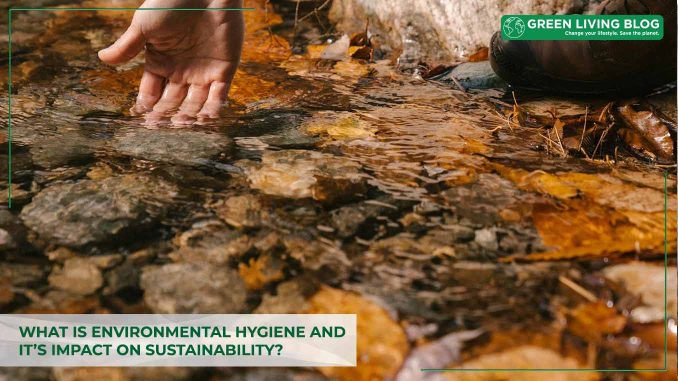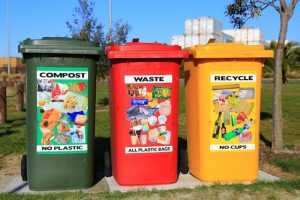
Environmental hygiene refers to cleanliness and order in our surroundings. Its aims range from protecting human health to promoting ecological sustainability, both crucial in today’s world where we grapple with the impacts of climate change and pollution.
This blog explores what environmental hygiene is, its significance and key aspects. We will also discuss best practices to improve environmental hygiene for a healthier planet and sustainable future.
What Does Environmental Hygiene Mean?
Environmental hygiene refers to maintaining a clean, safe, and sustainable environment. It encompasses a broad range of activities to prevent the spread of diseases, reduce pollution and preserve natural resources. This concept extends from individual habits to global efforts to address environmental issues.
Key Aspects of Environmental Hygiene
1. Waste Management:
Proper disposal and management of waste are fundamental to environmental hygiene. This includes recycling, composting and responsible disposal of different types of waste to minimise environmental pollution and health hazards.
2. Air Quality Control:
Industrial emissions, vehicular pollution, and deforestation reduce air quality and threaten human health. Environmental hygiene limits this damage by controlling emissions, promoting green spaces and supporting sustainable transportation options.
3. Water Conservation:
Access to clean water is fundamental for life. Environmental hygiene measures ensure the purity of water sources through proper sanitation and treatment facilities.
4. Biodiversity Preservation:
Environmental hygiene preserves ecosystems. Conservation of natural habitats, protection of endangered species and sustainable land use help maintain biodiversity and prevent the loss of valuable ecosystems.
Importance of Environmental Hygiene

Here are some reasons why environmental hygiene is essential:
1. Public Health:
A clean environment is directly linked to public health. Air quality, proper waste management and access to safe water prevent diseases and promote the overall well-being of communities.
2. Ecosystem Health:
Environmental hygiene plays a vital role in maintaining the health of ecosystems. Preserving biodiversity, preventing habitat destruction and reducing pollution help ecosystems thrive.
3. Climate Change Mitigation:
Environmental hygiene practices, such as reducing carbon emissions and protecting forests, mitigate climate change and help counteract the harm of global warming.
4. Sustainable Development:
Environmental hygiene is a cornerstone of sustainable development. Balancing economic growth with environmental protection ensures that current and future generations enjoy a high quality of life without compromising the planet’s resources.
Best Practices to Improve Environmental Hygiene
1. Reduce, Reuse, Recycle:
Encourage the adoption of the “reduce, reuse, recycle” mantra. Minimise waste production, reuse items whenever possible and support recycling initiatives to reduce the environmental impact of everyday activities.
2. Promote Sustainable Transportation:
Support and use sustainable transportation methods like walking, cycling, or public transport. This helps reduce carbon emissions and air pollution associated with conventional vehicles.
3. Conserve Water:
Implement water-saving practices, including fixing leaks, using water-efficient appliances and adopting responsible habits. Conserving water helps ensure a sustainable supply for future generations.
4. Plant Trees and Support Green Spaces:
Trees absorb carbon dioxide, a major cause of climate change, and provide oxygen. Support tree planting initiatives and advocate for green spaces to enhance air quality and promote biodiversity.
5. Educate and Raise Awareness:
Promoting education and raising awareness about the importance of environmental hygiene is key. Provide environmental awareness training to help individuals learn about common environmental threats, the importance of sustainability and what they can do to help.
Conclusion
Environmental hygiene is a collective responsibility that requires the participation of individuals, communities, and governments. Understanding its key aspects and implementing best practices can create a cleaner, healthier planet for current and future generations.
Every small effort adds up, and together we can make a significant impact on the well-being of the earth and its inhabitants.
![]()
Author Profile
- Online Media & PR Strategist
- Blogger and Educator by Passion | Senior Online Media & PR Strategist at ClickDo Ltd. | Fascinated to Write Lifestyle Blogs in News & Education I have completed a journalism summer course at the London School of Journalism and manage various blogs.
Latest entries
 Green Expert GuidesMarch 28, 2025Lisbon Living: Where Sustainable Charm Meets Urban Energy
Green Expert GuidesMarch 28, 2025Lisbon Living: Where Sustainable Charm Meets Urban Energy EnvironmentJanuary 21, 2025Buying Eco-Friendly Homes: 6 Eco Questions to Ask Your Real Estate Agent
EnvironmentJanuary 21, 2025Buying Eco-Friendly Homes: 6 Eco Questions to Ask Your Real Estate Agent BusinessJanuary 16, 202510 Benefits of used Office Furniture when Refurbishing an Office
BusinessJanuary 16, 202510 Benefits of used Office Furniture when Refurbishing an Office Best practicesJanuary 6, 2025Eco-Friendly Event Planning: Mastering Sustainable Waste Management for Holiday Celebrations
Best practicesJanuary 6, 2025Eco-Friendly Event Planning: Mastering Sustainable Waste Management for Holiday Celebrations








Leave a Reply
You must be logged in to post a comment.